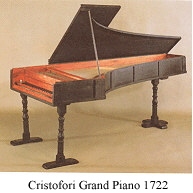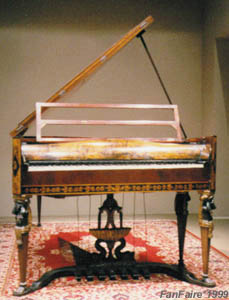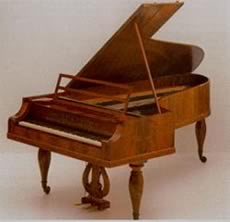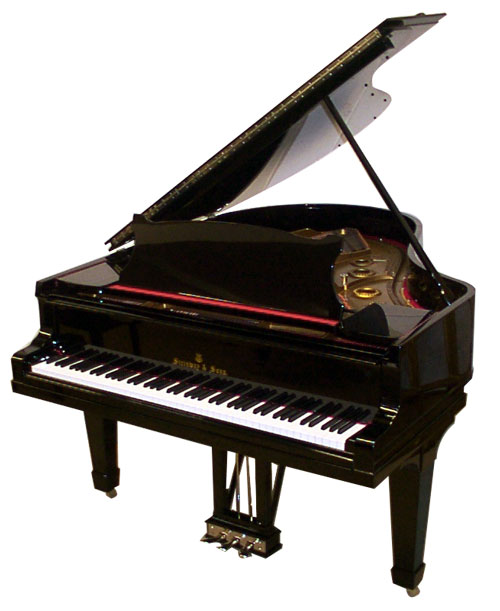The Invention and Progress of the Piano
Bartolomeo Cristofori's invention in 1709: The Pianoforte

http://www.ifrance.com/pianos/Histoire/pianoforte.htm
Important aspects of the piano:
1. The piano consists of a hammer action, allowing the player to produce loud and soft notes. For this reason, Cristofori's invention was originally called the "gravicembalo col piano e fortes"--The harpsichord with soft and loud. It was also commonly called the pianoforte.
2. After the hammer strikes the string, it moves away, leaving the string to vibrate loudly. Cristofori’s unique ‘escapement’ mechanism allowed the hammer to fall back from the string once it had hit, thereby allowing the string to vibrate in proportion to the force with which the key was struck.
3. Cristofori retained the ability to repeat a note quickly by building into the escapement a device called a 'check' that held the hammer still and close to the strings while the escapement reset itself for the next key stroke.
Piano of Beethoven’s Time

http://www.ffaire.com/beethoven/piano.html
During the eighteenth century, piano builders gradually extended the keyboard. Two important new developments were the escapement action for faster repetition of notes (about 1770 by Stein in Augsburg), and the damper and soft pedals (1783 by Broadwood in London). Special pedals, like the ones in this illustration, were often added to produce exotic effects.
Piano of Lincoln’s Time

http://www.ifrance.com/pianos/Histoire/romantiques.htm
During the ninteenth century, the piano continued to become more powerful and responsive. The outstanding improvements were the double-repetition action of Sebastien Erard (Paris, 1821) which allowed very rapid repetition; and the full cast-iron frame of Alphaeus Babcock (Boston 1825), the basis for today’s extended keyboard.
Modern Grand Piano

http://www.t-ppianos.co.uk/grandPianos/1920_SteinwayModelA.htm
The grand piano of today incorporates the best qualities of
early keyboard instruments. Consisting of a total of 88 keys and 220 strings.
When tuned to conert pitch, the average tension in a piano totals to 21 tons.
An important aspect includes cross stringing – a way to achieve greater
richness of tone by passing more strings over the center of the soundboard– was
invented by Alphaeus Babcock 1830 and first used on the modern grand piano.
The sostenuto, or middle pedal was introduced in the late ninteenth century,
permitting greater musical coloring.
Main Page
Before the Piano
Inside a Concert Grand
The Action Mechanism
Bibliography